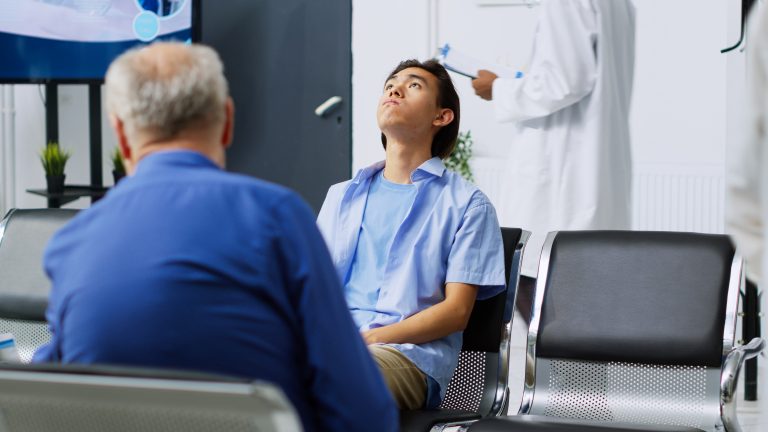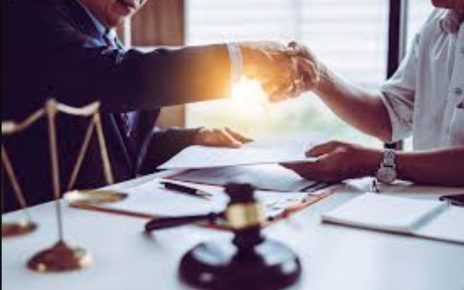Northridge is growing fast, more households, more students on foot, and far more cars threading the same corridors. With that growth comes a responsibility to keep people safe and to stand up for those hurt when safety breaks down. Personal Injury Lawyers Northridge aren’t only litigators: the best firms act as local watchdogs, educators, and data-driven advocates. Readers looking for a starting point often turn to trusted, community-embedded teams such as the Personal Injury Lawyers Northridge at https://hht-law.com/ (https://hht-law.com/), who combine legal strategy with proactive safety initiatives. This article explores how a community-focused approach strengthens public safety, clarifies legal pathways for victims, and leverages transparent communication and analytics to improve outcomes in 2025.
How community-focused law practices enhance local safety awareness
Community-focused firms do more than file claims: they listen, show up, and share what they learn. In a neighborhood like Northridge, anchored by schools, small businesses, and busy arterials, those patterns matter. When a law office charts where collisions cluster or which crosswalks consistently cause near-misses, that intel turns into prevention.
Three levers move the needle:
- Hyperlocal insights: Attorneys and investigators sit with residents and retail managers, identifying risky storefront configurations, faded crosswalk paint, or delivery truck blind spots. A quick walk-through of Reseda Boulevard at rush hour teaches more than any spreadsheet ever could.
- Shareable safety content: Short, plain-English explainers pushed through HOA newsletters, campus channels, or local Facebook groups help people spot hazards early. Topics like “left-turn traps,” scooter dooring, and parking-lot liability get traction because they’re relatable.
- Partnerships that stick: When firms partner with neighborhood councils, school safety committees, or Vision Zero working groups, they can transform case lessons into infrastructure asks, better signal timing, curb extensions, protected left turns, or speed feedback signs.
The result is a feedback loop: cases reveal preventable patterns: patterns inform outreach: outreach drives safer design and behavior. It’s not charity, it’s smart, community-centered advocacy that reduces injuries and, ironically, the very cases attorneys are hired to pursue.
Injury claim trends linked to Northridge’s expanding traffic density
Northridge’s traffic density has climbed as enrollment and housing stock grow, and claim patterns reflect that reality. While exact counts shift year-to-year, Personal Injury Lawyers Northridge frequently report the following trendlines:
- More turning collisions at busy arterials: Left-turn crashes at multi-lane intersections (e.g., along Devonshire, Roscoe, and Nordhoff corridors) continue to drive a significant share of severe injuries. Congestion compresses decision-making: drivers rush amber phases and miss pedestrians stepping into the crosswalk late in the cycle.
- Parking-lot incidents on the rise: Retail growth brings vast parking areas where low-speed doesn’t mean low-risk. Reversing vehicles, poor sightlines, and ambiguous right-of-way rules lead to fractures and traumatic brain injuries from falls or impacts.
- Delivery pressure points: App-based delivery and rideshare traffic add unpredictable stopping, double-parking, and sudden U-turns near restaurant clusters, small behaviors that create outsized risk for cyclists and pedestrians.
- Vulnerable users getting hit: Students and older adults are overrepresented in claims involving unprotected crosswalks and mid-block crossings. E-scooters and e-bikes add speed variance that drivers still haven’t adapted to.
A mature injury practice doesn’t just react. It negotiates with insurers using context, traffic counts, signal timing logs, collision heat maps, to rebut the usual defenses. When counsel can tie a crash pattern to known hazards, liability arguments for comparative negligence often weaken, and settlements more closely match real harm.
Legal pathways for victims of pedestrian and retail property accidents
After a pedestrian or retail property injury, victims face a maze of forms, calls, and uncertainty. The legal pathways are clearer when broken into steps.
Pedestrian incidents
- Identify all potentially liable parties: the driver, the driver’s employer (if on the job), a rideshare platform (if in use), and sometimes a public entity if dangerous intersection design played a role.
- Preserve evidence early: intersection camera requests, 911 audio, dashcam pulls from nearby vehicles, and scene measurements. Skid marks fade: video loops overwrite in days.
- Medical documentation and prognosis: plus to ER records, treating physician narratives and functional capacity evaluations help quantify long-term limitations.
- Claims and timelines: California’s statute of limitations for personal injury is typically two years, but claims against public entities require a government claim within six months. Missing that deadline can be case-ending.
Retail property accidents (premises liability)
- Proving notice: success often turns on whether the business knew, or should’ve known, about a hazard. Cleaning logs, incident histories, and surveillance footage demonstrate how long a spill, uplifted mat, or broken curb existed.
- Allocation of fault: comparative negligence rules mean defendants may argue a victim was looking at a phone or wore unsafe footwear. Effective counsel reframes the narrative: reasonable customers shouldn’t expect hidden hazards.
- Insurance layers: premises claims may involve primary commercial general liability, excess policies, and, for tenant-operated stores, additional insured endorsements. Mapping coverage early avoids settlement surprises.
Across both categories, Personal Injury Lawyers Northridge who are deeply local can leverage prior case knowledge, “this aisle always floods after floor cleaning,” “this crosswalk’s signal lag is notorious”, to build credibility and speed resolution. For readers seeking help, firms like those at https://hht-law.com/ (https://hht-law.com/) typically start with free consultations to triage facts, evidence, and deadlines.
Building trust through transparent communication with clients
Trust isn’t a line item in a retainer: it’s earned through consistent, transparent contact. Clients don’t want a flood of legal jargon, they want to know what’s happening, what’s next, and why it matters.
What effective communication looks like:
- Plain-language roadmaps: At intake, clients get a step-by-step overview, medical stabilization, liability investigation, insurance coverage mapping, negotiation phases, and trial decision points. No mystery.
- Proactive updates: Scheduled check-ins (biweekly or monthly) beat reactive “just following up” emails. Short, specific updates, “We received the policy limits disclosure: next, we’ll request the declaration page”, lower anxiety.
- Document visibility: Portals where clients can see demand letters, medical summaries, and insurer responses foster buy-in. When clients see the work, they understand the pace.
- Expectation setting on timelines and value: Early, honest ranges for both case duration and potential outcomes prevent disappointment later. Great lawyers would rather under-promise and over-deliver.
Firms grounded in Northridge’s rhythms know when to move quickly (e.g., securing campus surveillance before midterms turnover) and when to slow down (waiting for a treating orthopedic specialist’s impairment rating). Personal Injury Lawyers Northridge who communicate this cadence openly create confidence, and better decisions, at every fork in the road.
Data-driven advocacy improving case preparation and jury outcomes
Juries respond to stories backed by credible data. In 2025, the best plaintiff teams pair narrative with analytics:
- Crash reconstruction and telematics: Event data recorders, smartphone telemetry, and connected scooter logs can establish speed, braking, and impact angles. Visualizations, animated but conservative, help jurors see what witnesses felt.
- Comparative risk framing: Instead of abstract negligence, attorneys show before/after risk: collision rates pre- and post-signal re-timing, or injury severity differences where protected left turns exist. The message: this harm wasn’t random: it was predictable.
- Medical outcome analytics: Prognosis supported by outcome registries (e.g., typical recovery windows for tibial plateau fractures) makes future care plans tangible, countering insurer claims that the plaintiff is “healed enough.”
- Settlement modeling: Using historical verdicts and local adjuster behavior, lawyers test offers against risk ranges. If an offer falls below modeled outcomes even after discounting trial risk, declining it becomes a reasoned choice, not a gamble.
Critically, data never replaces the human story. It supports it. Jurors, like everyone else, want to do the right thing: clear evidence and humble, fact-forward presentation give them permission to deliver full justice. Local firms, such as those accessible via https://hht-law.com/ (https://hht-law.com/), often maintain internal databases of Northridge-specific incidents, which can quietly strengthen negotiation leverage before trial is even on the table.





